You look in the mirror, and your jaw drops. You think to yourself, I dyed my hair red, but it turned purple. How did your hair turn purple after dyeing it red? More importantly, how can you fix it?
Don’t worry! We will cover everything you need to know about why your red hair dye turned purple and how can you fix it.
The Truth About Purple Hair Dye: Base Colors Matter
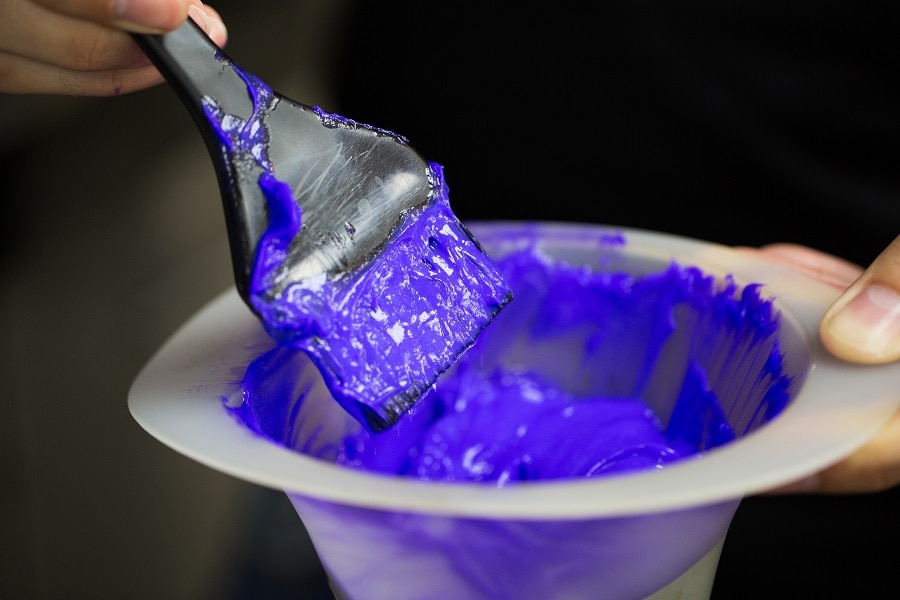
Purple is not a natural hair color, so it takes effort to achieve the right shade. Success depends heavily on your natural color because darker hues require bleach to pull off a vibrant violet.
- Brunettes command warm purples much easier than other shades. They need to lighten their hair to work with cooler shades of purple.
- Blondes have more range and work well with pastels and lighter shades, like lilac.
- Purple dye can be tough on hair. It takes a lot of prep to get hair healthy enough to handle it, especially more vibrant shades. Plus, you might need to lighten it with bleach first.
- Purple hair is not beginner-friendly. Maintaining it requires substantial time and effort, like touch-ups every four to six weeks.
Be aware that even if you do everything right, like washing your hair less and avoiding swimming in chlorinated water, purple fades faster than most colors. Plus, when purple fades, it tends to look gray.
Purple Hair After Red Dye: What Went Wrong?
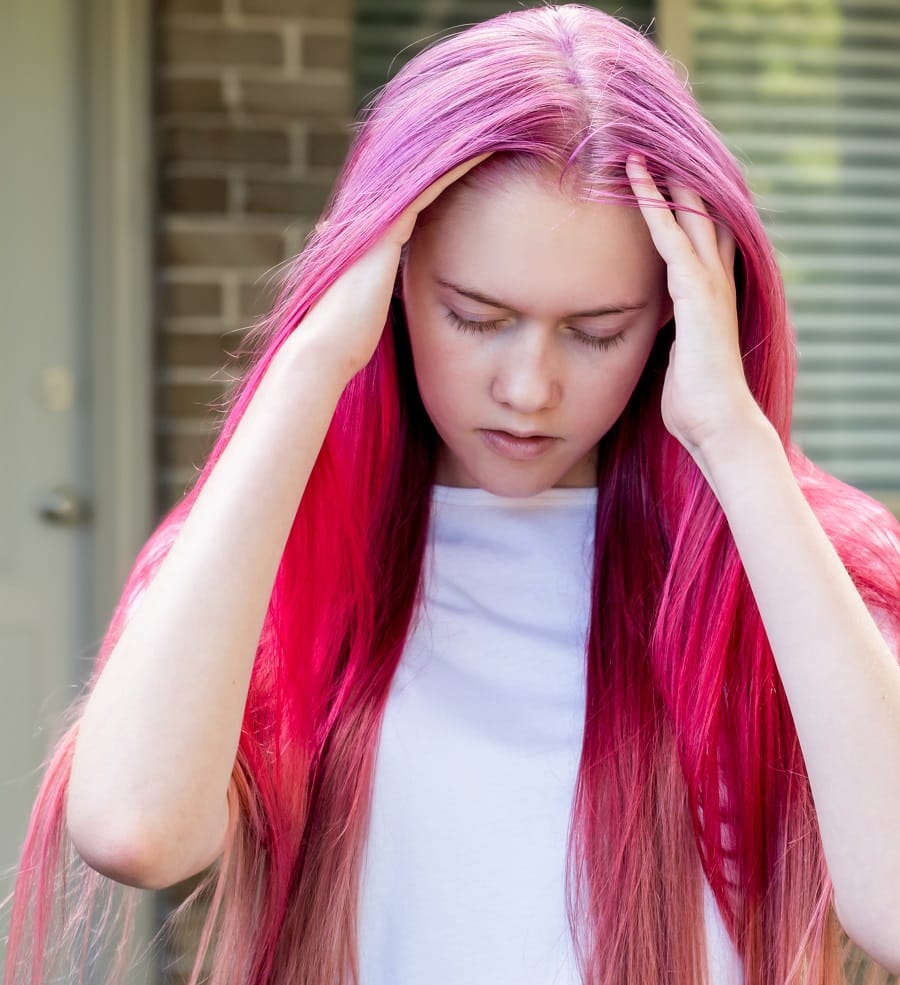
You picked up red dye with dreams of vibrant auburn only to be disappointed by strong violet overtones. If it makes you feel better, you aren’t the only person to go through this disappointment.
Red hair dye often turns hair purple because it tends to have violet undertones. Your hair might have gone full purple instead of red for a few key reasons:
- You used the wrong red dye. Every red hair dye is different, mahogany and burgundy are completely unique shades.
- You didn’t consider your base hair color when choosing the red dye.
- Your hair still has chemicals on it that affected the processing.
- There’s staining from previous dye jobs that altered the final color.
The best way to avoid this issue is to see how your hair will react to the dye by performing a strand test. Even experienced colorists apply the dye to a test strip of hair before doing the whole head.
Performing a strand test can tell a stylist several different things if there are any residual chemicals that can affect the processing.
Additionally, the strand test could indicate that there is leftover color in your hair. Even if it’s been a while since your last dye job, and even if your hair looks natural, it could be stained.
Let your hairstylist know if you have had any color treatments in the last couple of years. It would be best if you also mentioned any at-home treatments you have applied.
The strand test may indicate a need for a restorative treatment before they add a new color. They will strip the old color away and apply a conditioner to help repair any chemical damage.
Color Correction: Fixing Purple Hair After Red Dye
Whether your red dye job looks purple right away or it takes a few washes for those violet hues to stand out, you need to know how to fix it fast.
First, you have to figure out where things went wrong.
If You Choose the Wrong Red Dye
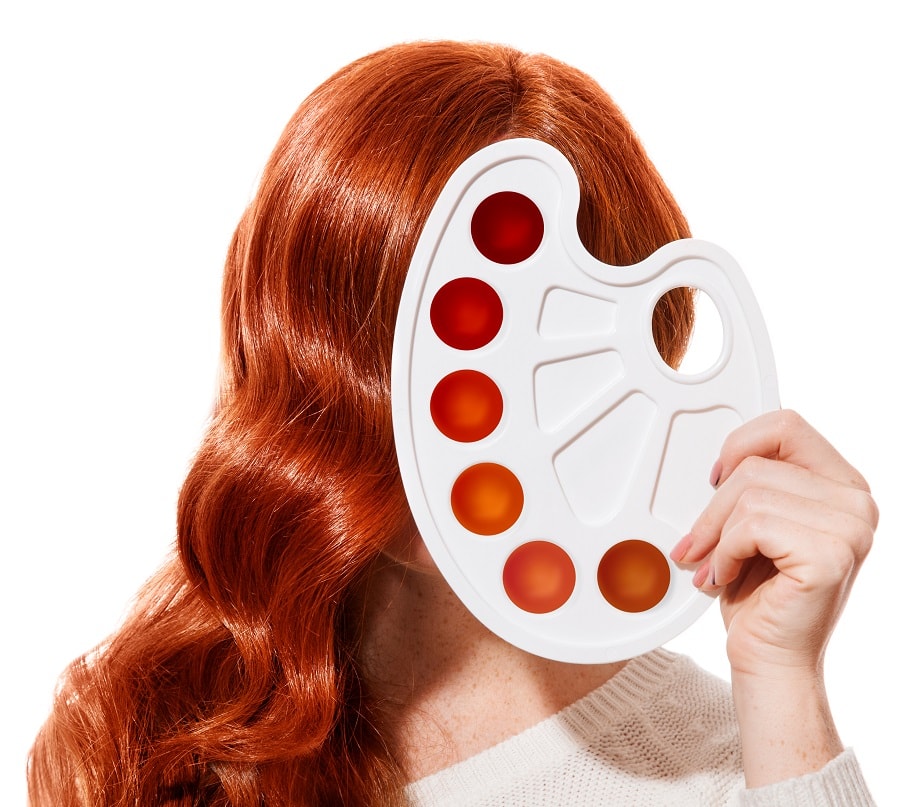
Say you picked a burgundy shade, it’s no surprise that your hair turned purple. Don’t worry, all is not lost, try a different red dye that has different shades.
You can also use a toner or dye to cancel out that purplish tint.
Several companies make toners to offset colors, but you need to choose the right one. If your purple is lighter it might favor blue pigments, which requires orange toner. For darker purples, go with a yellow toner.
Trying to neutralize the purple with another dye job can be challenging, but it follows similar principles as the toner. For bluish tints, go with an orange-based or brassy dye. Darker purple hair requires yellow-based dyes.
If You Didn’t Consider Your Base Color
Maybe your virgin hair has blue or black undertone. Do you dye your hair often? Maybe you had some leftover bluish hints in your hair that blended with the reds to give you that purple tinge. Try using a clarifying or red shampoo to enhance those colors and mute the blues.
Note that if there were no hints of blue in your base color, then you need to look at the other options. Maybe bleaching will be your best bet for your darker base color.
If You Have Chemical Residue in Your Hair
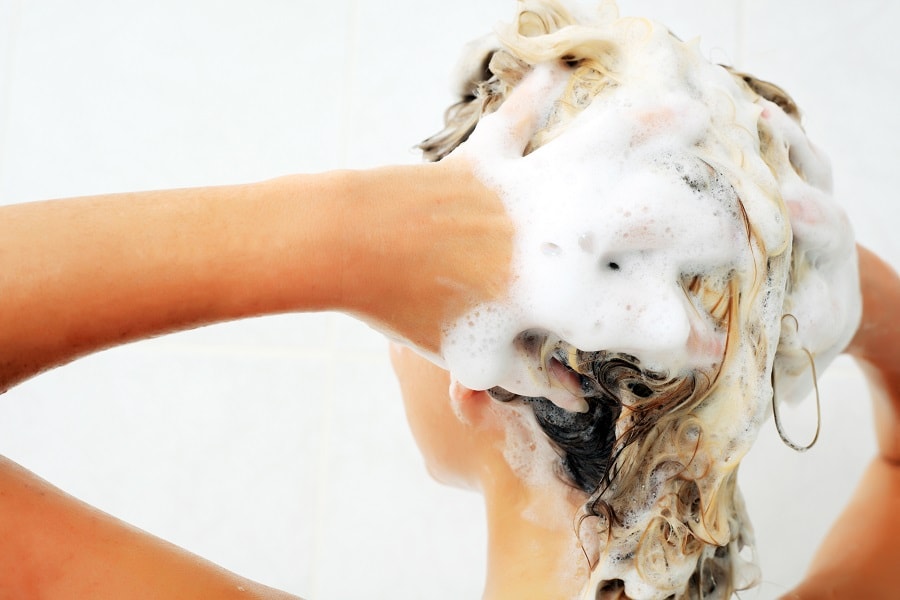
Any chemicals left in your hair can impact the dye results. It’s possible that you didn’t do enough to remove the chemicals before dyeing your hair.
You may have to resort to color removal methods to strip out the color and then focus on healing your damaged hair.
- Clarifying shampoos provide a deep cleanse that will remove any excess buildup of color in your hair. Be sure to follow up with a good conditioning treatment.
- Try lemon juice and Dawn dish soap. Wet your hair thoroughly. Apply a tablespoon of dish detergent to your scalp and gently work it through your hair. Rinse and repeat with lemon juice. Follow up with an intense hydrating treatment.
- Use a commercial color remover kit and follow its instructions.
If none of these approaches can do the job, it’s best to see a professional because the next step is likely to bleach your hair. Since it can further damage your hair, it’s a last resort that should only be handled by a trained professional.
If Your Previous Colors Stained Your Hair
Coloring your hair leaves residuals whether it’s obvious or not. If you happened to use a lot of ash tones, it’s likely the cause of your purple hair.
Most of the dyes in the ash color family have blue tints in them, which reacts with the red pigments to produce that purplish color. This reason is more likely to cause the hair to turn purple as the red fades from washing.
You can offset this issue by using red shampoo to enhance the red pigments and avoid purple going too purple.
If you can’t find a red shampoo, try making your own. Mix red hair dye with any sulfate-free shampoo and use it two times per week. It helps to let the shampoo-dye mixture sit on your hair for a few minutes before rinsing it out.
What Base Hair Colors Cause Red Hair Dye to Turn Purple?
When choosing a red dye, it’s necessary to consider your natural base color and any recent dye jobs, like those within the past year or so. While your natural color should exist near the root, the ends could have remnants of several dye jobs, depending on how often you color.
For example, any dyes with blue or black pigments will interact with the red dye to create a purple hue. That includes all shades of blue, black, and several bright color options.
Once you understand your base color, you need to decide what look you desire. If you want a reddish-auburn hue, don’t select anything on the burgundy side of the reds.
Even if you have virgin hair, if it has ashy or bluish tones, you have to be careful with which red hair dye you choose.
While it’s easier for darker base hair color to take a deeper red, choosing any of the burgundy colors will typically lead to purplish hair as the red fades. That means most people with darker hair will need to bleach before going red to avoid turning purple.
What Color Level Should I Choose to Prevent Red Dye from Turning Purple?
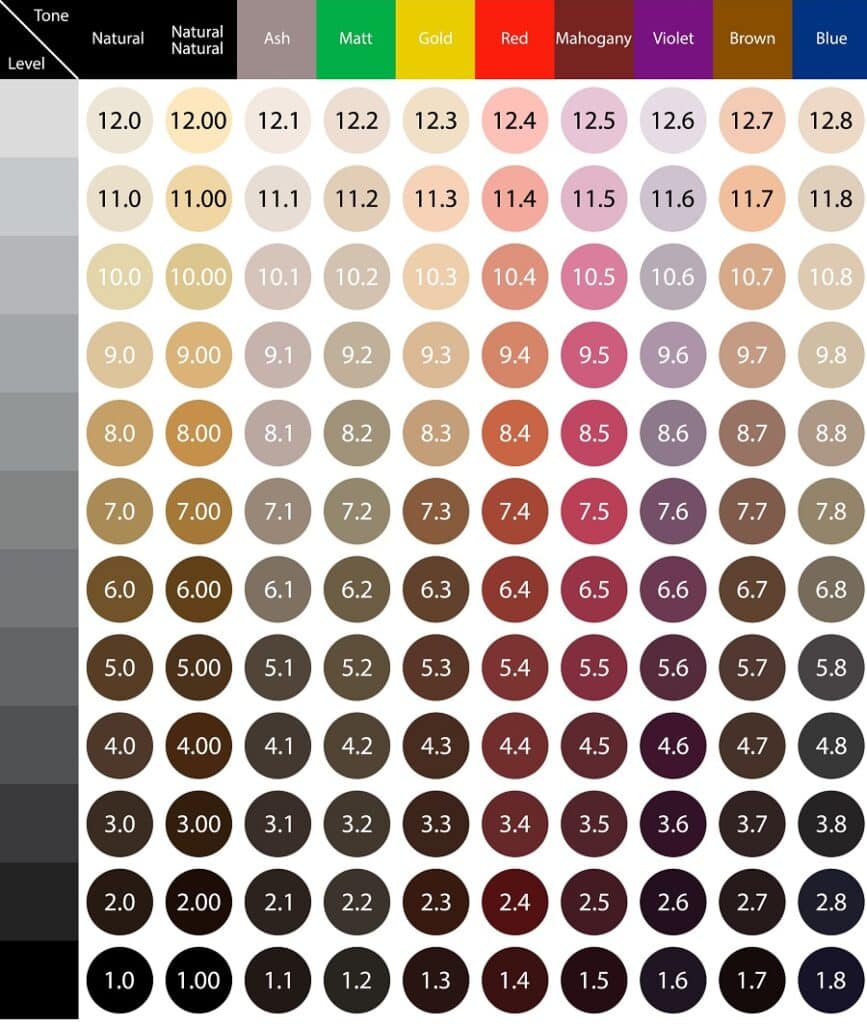
Every color kit has numbers designating the color. If you want to go red without the purple, choose kits with numbers ending in six. Any kits that have a five in the second or third spot could turn your hair purple because they fall in the burgundy family. For example, a 7.5 would yield purple but a 6.6 would be redder.
To neutralize bluish hues, choose toners and dyes with a four in the second spot on the number code, like 7.4 (brassy blonde).
Neutralizing dark purple tints requires toners and dyes with a three in the second position of the number code, like 4.3 (golden brown).
You can also include a red toning shampoo in your regular hair maintenance routine. It will enhance the reddish pigments and neutralize any residual blues.
So, How to Fix Red Hair Dye That Turned Purple
You can remove the red hair dye using dish detergent and lemon juice or a bleach mixture. You can also use a commercial color remover if all else fails. You can reapply the red dye once you remove all the color from your hair.


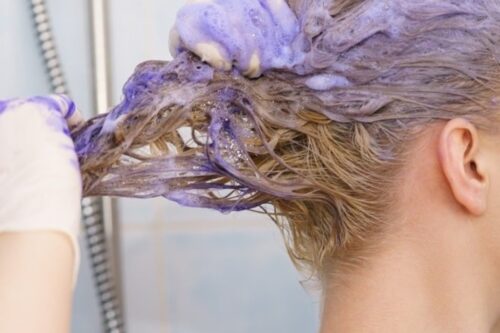
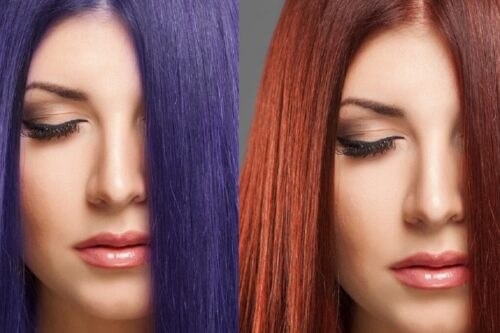
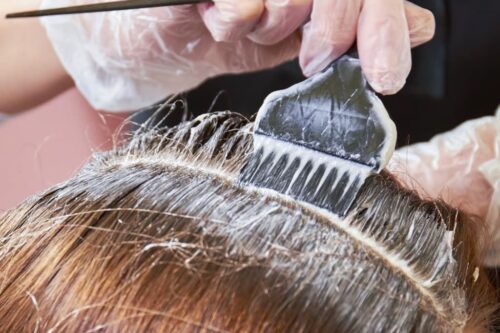
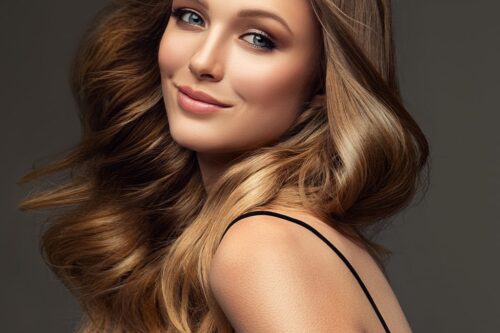
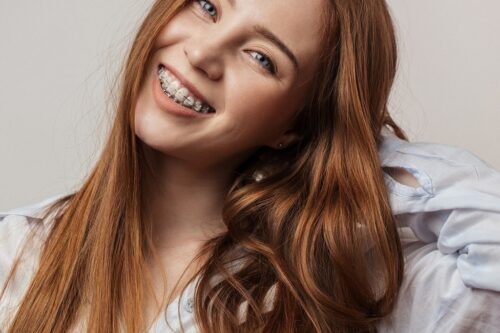
hey so i tried to dye my hair red and it like totally went purple instead? what am i doing wrong lol should i have bleached it more first or something
Oh no, purple surprise! Could be your base color or even the dye brand. Some dyes act weird. What brand did you use?
Actually, it’s more about the interaction between your hair’s base color and the dye. Purple can result if the red dye has a strong blue base and your hair wasn’t light enough.
lmao imagine trying to go firetruck red but ending up with barney the dinosaur instead 😂 has anyone really been far as decided to use even go want to do look more like?
Dear friends, I wished for a lovely red tint in my silver locks, but alas, it turned a peculiar shade of lavender. Is there a kindly soul who might explain why this odd transformation occurred?
You could definitely see your skills in the work you write. The world hopes for even more passionate writers like you who are not afraid to say how they believe. Always go after your heart.